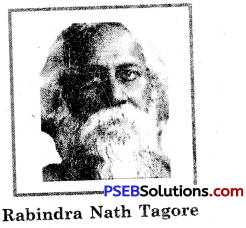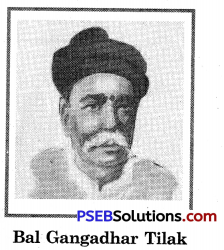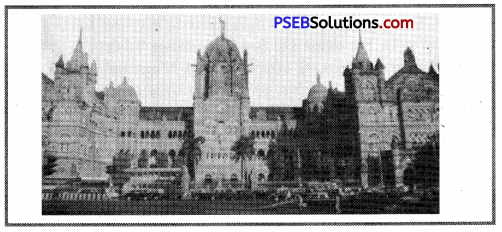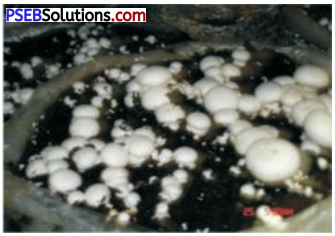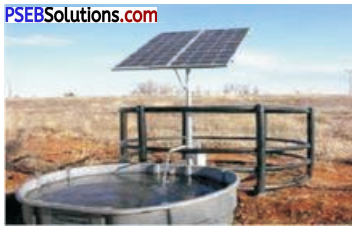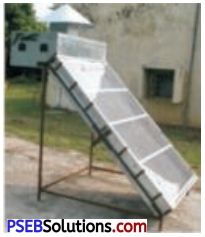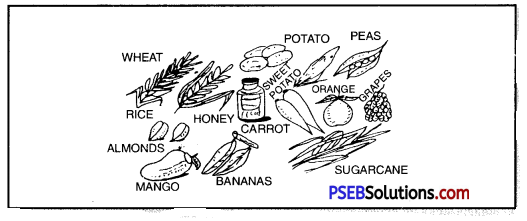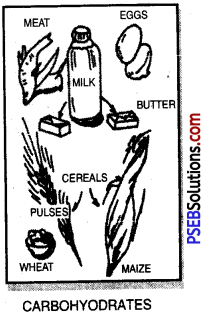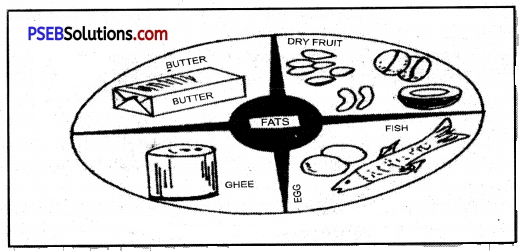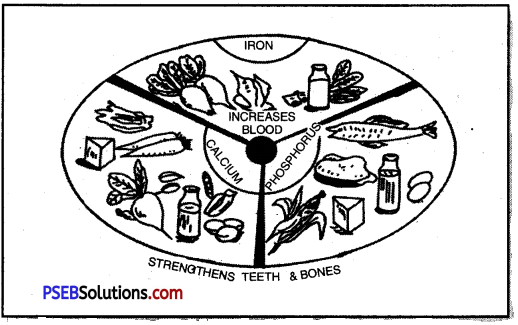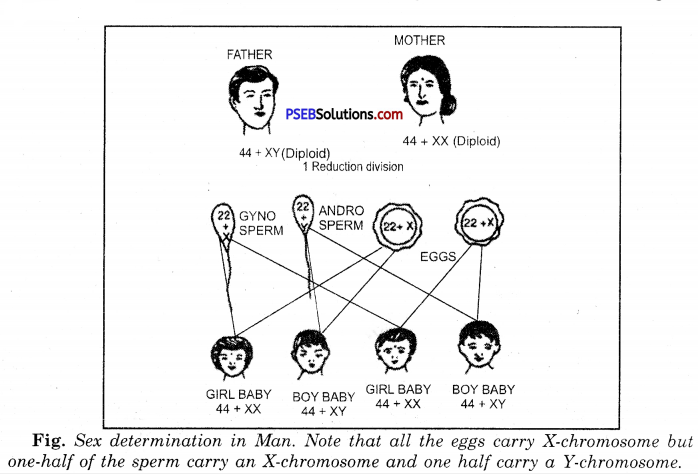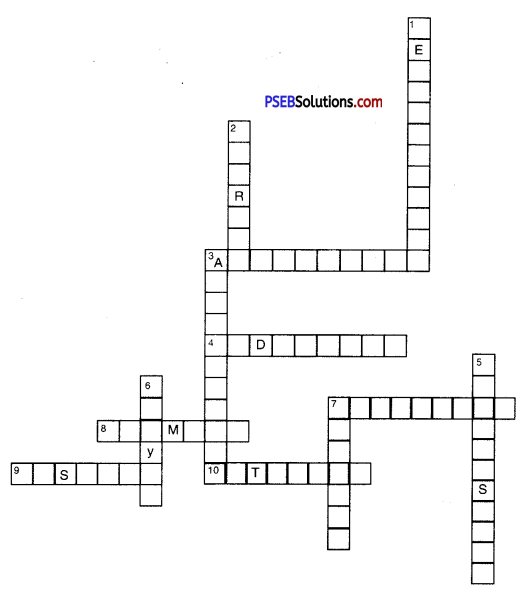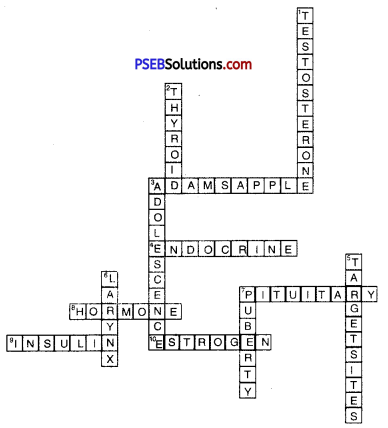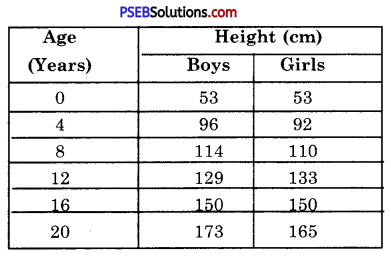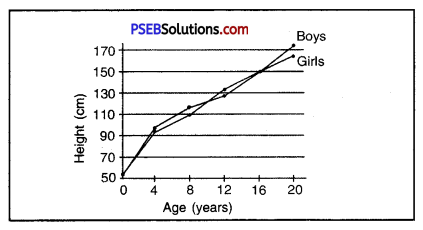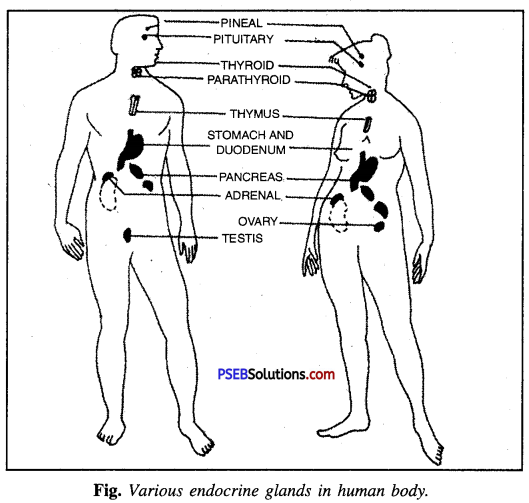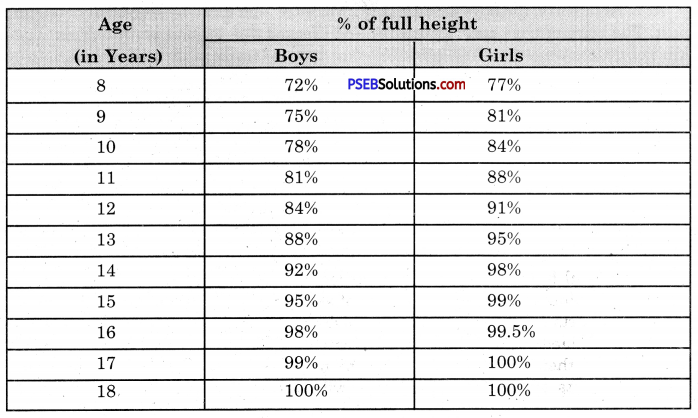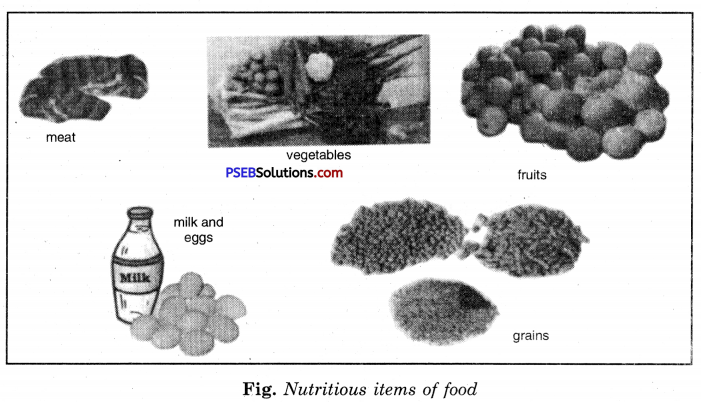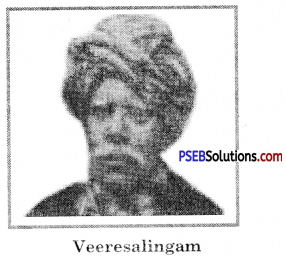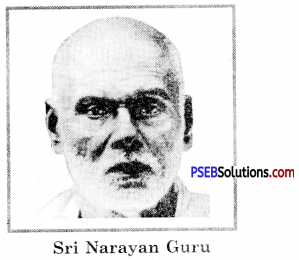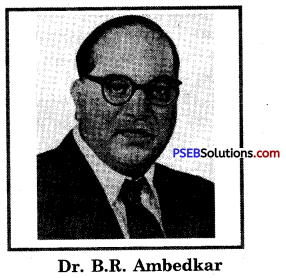Punjab State Board PSEB 8th Class Social Science Book Solutions History Chapter 13 Colonialism and Tribal Society Textbook Exercise Questions and Answers.
PSEB Solutions for Class 8 Social Science History Chapter 13 Colonialism and Tribal Society
SST Guide for Class 8 PSEB Colonialism and Tribal Society Textbook Questions and Answers
I. Answer the following questions :
Question 1.
In which states majority of the people belonging the tribal society lives?
Answer:
Tribal people live more in number in Rajasthan, Gujarat, Madhya Pradesh, Bihar and Orissa.
Question 2.
What are the main occupations of tribal people?
Answer:
Main occupations of tribal people are animal rearing, hunting, catching fish, collection of food items and agriculture.
Question 3.
In which states the tribal people revolted against the Britishers?
Answer:
People of tribal society revolted against the British in the states of Madhya Pradesh, Bihar, Orissa, Meghalaya, Bengal, etc.
![]()
Question 4.
Who was the leader of Khasi tribe?
Answer:
Tirut Singh was the leader of Khasi tribe.
Question 5.
When and which tribe in Chhota Nagpur area revolted against the Britishers?
Answer:
Kol tribe of Chhota Nagpur area revolted firstly against the British in 1820 A.D.
Question 6.
Who was made the leader of Kharodh tribe by the Britishers?
Answer:
One person of Kharodh tribe was thrown out of society. He was called back by the British and was made the head of tribe.
Question 7.
Write a note on Tribal society.
Answer:
Tribal society or tribal people are one of the important part of Indian population. Their population was around 160 millions according to the Census of 1991. A very large population of tribal people live in Rajasthan, Gujarat, Bihar, Orissa and Madhya Pradesh. 23.22% part of total population of Madhya Pradesh belongs to tribes. Some tribes also live in small states and union territories like Sikkim, Goa, Mizoram, Dadra-Nagar Haveli and Lakshadweep. Most of the tribal people belong to Gond, Bhil, Santhal, Mizo and other tribes.
Question 8.
Write a note on Birsa Munda.
Or
What do you know about Birsa Munda?
Answer:
Birsa Munda was a leader of the revolt of the Munda tribe in Bihar (Chhota Nagpur area). He was a very powerful person. He was considered as the messenger of God. He protested motion against such non-tribal people who took away the land of Munda people. Munda people also hate moneylenders and Zamindars because they treated them badly. Birsa Munda told the Munda people to not to pay the taxes to Zamindars. Munda people in Chhota Nagpur region attacked the British officers, missionaries and police stations. But Birsa Munda was arrested by the British and the revolt was crushed.
Question 9.
Write down the effects of the revolt of Birsa Munda.
Answer:
Munda revolt was a powerful tribal revolt. So government started to care about the problems of tribal people after the suppressing of revolt.
All in all impacts of revolt of Munda tribe are given below :
- The British Government passed ‘Chhota Nagpur Act’ in 1908. According to this act marginal farmers were given the rights of land.
- Social and religious consciousness came among the people of Chhota Nagpur region. Many people started to worship Birsa Munda.
- Many new socio-religious movements were started.
- Tribal people started to struggle for their rights.
![]()
Question 10.
Explain the revolts by tribal society in northern-eastern regions.
Answer:
Khasi revolt. First revolt in North-Eastern region was started by Khasi tribe. They had complete control from Jaintia mountains in East and upto Garo mountains in the west. Tiruth Singh was the founder of this tribe. Khasi people wanted to throw foreigners out of their region. On 5th May, 1829, Khasi people, with the help of Garo people, killed many Europeans and Bengalis. They put European colonies on fire. Tiruth Singh also wanted to remove foreign rule from Bhots and Singphose and some other mountaineous tribes. So he revolted against the British rule with the help of his 10,000 men. On the other side Khasis villages were put on fire one by one by the British. Later on in 1833 A.D., Tiruth Singh surrendered in front of the British army.
Singphos Revolt. When the British soldiers were busy in suppressing the revolt of Khasi tribe, at that time Singphos tribe also revolted against the British. Both of these tribes also invited the other tribes like Khapti, Garo, Naga, to join the revolt. All of them collectively attacked the British army in Assam and killed many Britishers. But they had to surrender because they were unable to face the modern weapons of the British.
Other Revolts,
- Khasi tribe again revolted in 1839 A.D. They also killed the political messenger of the Britishers Colonal White and many other Britishers.
- Another tribe of North-east Naga also revolted. This revolt lasted for 2-3 years.
- Revolt of Kukis in mountainous region of Manipur also lasted for a long time. They were 7,000 in number. They revolted against the British in 1826, 1844 and 1849 A.D. They also killed many British officers. But later on all of these revolts were suppressed by the British government. arrested Kukis were tortured in a number of ways.
II. Fill in the Blanks :
Question 1.
Tribal society is an _______ part of the Indian population.
Answer:
important
Question 2.
Tribal people lived in _______ or _______ rooms huts.
Answer:
one, two
Question 3.
From Jaintiya hills to Garo hills territories in East were under the control of the _______ tribe.
Answer:
Khasi
![]()
Question 4.
When the British soldiers were facing the revolt of Khasi, another tribe _______ revolted.
Answer:
Singphos.
III. Write ‘True’ or ‘False’ in the brackets given after each statement:
Question 1.
Gonds are in minority among the tribes.
Answer:
False
Question 2.
The basic unit among tribal people is family.
Answer:
True
Question 3.
The Britishers occupied the tribal land for the opium and indigo farming.
Answer:
True
Question 4.
Birsa Munda called upon the farmers of Munda tribe to pay the taxes to the Zamindars.
Answer:
False.
PSEB 8th Class Social Science Guide Colonialism and Tribal Society Important Questions and Answers
Multiple Choice Questions :
Question 1.
Who was Birsa?
(a) Leader of Munda tribe
(b) Leader of Oraon tribe
(c) Leader of Ho tribe
(d) Leader of Khasi tribe.
Answer:
(o) Leader of Munda tribe.
![]()
Question 2.
Tribal Society is a Society which lives away from our civilization in , valleys and mountains.
(a) Villages
(b) Forests
(c) Towns
(d) Cities.
Answer:
(6) Forests.
Question 3.
_______ made some laws and started to interfere in the internal matters of tribals.
(a) Indian Government
(b) Local Governments
(c) The British
(d) None of these.
Answer:
(c) The British.
Question 4.
Who used to do Jhum Cultivation?
(a) Villagers
(b) Urban people
(c) Forest dwellers
(d) Jribals.
Answer:
(d) Tribals.
Question 5.
Large number of tribals recruited to work in tea plantations of
(a) Assam
(b) Jharkhand,
(c) Manipur
(d) West Bengal.
Answer:
(a) Assam.
Question 6.
Birsa Munda was arrested in _______
(a) 1890 A.D.
(b) 1895 A.D.
(c) 1888 A.D.
(d) 1898 A.D.
Answer:
(b) 1895 A.D.
![]()
Question 7.
Birsa Munda was released in _______
(a) 1896A.D.
(b) 1898 AD.
(c) 1897 A.D.
(d) 1899 A.D.
Answer:
(c) 1897 A.D.
Question 8.
When did Birsa Munda die?
(a) 1898A.D.
(b) 1899A.D.
(e) 1897A.D.
(d) 1900A.D.
Answer:
(d) 1900 A.D.
Question 9.
Birsa Munda was died due to _______ disease.
(a) Cholera
(b) Plague
(c) T.B.
(d) Fever.
Answer:
(a) Cholera.
Question 10.
What is Sal?
(a) A type of cloth
(b) A type of tree
(c) A type of honey
(d) A type of herb.
Answer:
(b) A type of tree.
![]()
Question 11.
Tell the name of the person shown in the picture.
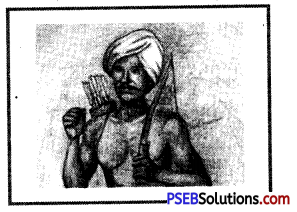
(a) Mahatma Gandhi
(b) Birsa Munda
(c) Mangal Pandey
(d) Teerath Singh.
Answer:
(b) Birsa Munda.
Fill in the Blanks :
Question 1.
Tribal society is one of the _______ part of Indian population.
Answer:
important
Question 2.
Tribals live in huts with _______ or _______ rooms.
Answer:
one, two
Question 3.
From Jainia hills in the east till Garo hills in the west the area was under the occupation of ______________ tribe.
Answer:
Khasi
![]()
Question 4.
When the British soldiers were facing the Khasi revolt, another tribe of _______ also revolted.
Answer:
Singfosa.
Tick the Right (✓) or Wrong (✗) Answer:
Question 1.
Gonds are in minority among the tribes.
Answer:
(✓)
Question 2.
The first basic unit of tribal social system is family.
Answer:
(✓)
Question 3.
The British occupied tribal land only to produce opium and indigo.
Answer:
(✓)
![]()
Question 4.
Birsa Munda asked the people to not to pay taxes to Zamindars.
Answer:
(✗).
Match the Following :
Question 1.
| A | B |
| 1. Revolt of Kharodh Tribe | (i) 1855 A.D. |
| 2. Revolt of Santhal Tribe | (ii) 1846 A.D. |
| 3. Munda Revolt | (iii) 1899-1900 A.D. |
| 4. Kol Revolt | (iv) 1820 A.D. |
Answer:
| A | B |
| 1. Revolt of Kharodh Tribe | (ii) 1846 A.D. |
| 2. Revolt of Santhal Tribe | (iv) 1820 A.D. |
| 3. Munda Revolt | (iii) 1899-1900 A.D. |
| 4. Kol Revolt | (i) 1855 A.D. |
Very Short Answer Type Questions
Question 1.
What is meant by tribal society?
Answer:
Society of tribal people is known as tribal society.
Question 2.
With which tribes Indian tribal people are associated? Name them.
Answer:
Gond, Bhil, Santhal, Mizo, etc.
Question 3.
Tell in brief the regional distribution of the tribal people.
Answer:
Around 63% tribal people live in the mountainous region, 2.2% in islands and 1.6% in cold regions. Other people are scattered in different urban and rural regions.
![]()
Question 4.
What was the basic reason of revolts of tribal people against British rule in 19th century?
Answer:
The main reason of revolts of tribal people against British rule in 19th century was wrong policies of the British government. Their land was snatched and their means of livelihood were destroyed.
Question 5.
When Naga revolt of North Eastern region took place? How much it lasts long?
Answer:
Naga revolt of North Eastern region took place in 1844 A.D. It lasted for 2-3 years.
Question 6.
Why was land of tribal people snatched by the British Government?
Answer:
The British wanted to grow opium and indigo due to the commercialization of crops. That’s why their land was snatched by the British government.
Question 7.
Name any four leaders of different tribal revolts.
Answer:
Tirut Singh (Khasi), Sidhu and Kanhu (Santhal) and Birsa Munda (Munda tribe).
Question 8.
Why did the British government start the commercialization of agriculture?
Answer:
The British government started the commercialization of agriculture for their own selfish economic-interests.
![]()
Question 9.
Why were tribals against the British rule?
Answer:
The tribals were completely against the new arrangements of the British rule because they did not approve the social and economic changes brought by the British.
Short Answer Type Questions
Question 1.
Give a brief description of houses and occupations of tribal people.
Answer:
Tribal people live in the huts of barely one-two rooms which are made without any planning. These huts are made in 2-4 lines in front of each other. These huts are surrounded by large trees. These people generally rear tamed animals, sheeps and goats. They depend upon local natural and material means. Except these, their occupations include hunting, catching fish, gathering of food and ploughing the field with the help of bulls.
Question 2.
Write a note on family of tribal society.
Answer:
Family is the first social unit of tribal society. Women play a very important role in household works of the family. Main functions of women are making food, collecting wood, cleaning and washing the clothes. They help males in their agricultural work. This work includes levelling the land, sowing the seeds, cutting the crops, etc. Main functions of males are cutting the jungles, levelling of the land, ploughing the field etc. Because females help in a great deal to men in their works, that’s why the custom of polygamy exists in tribal society.
![]()
Question 3.
Write a note on revolt of Khasi tribe in the North-Eastern region of the country.
Answer:
First revolt in the North-Eastern region was started by Khasis tribe. They had complete control from Jaintia mountains in East and upto Garo mountains in the west.
Tirut Singh was the founder of this tribe. Khasi people wanted to throw foreigners out of their region. On 5th May, 1829, Khasis people, with the help of Garo people, killed many Europeans and Bengalis. They put European colonies on fire. Tirut Singh also wanted to remove foreign rule from other mountainous tribes as well. So he revolted against the British rule with the help of his 10,000 people. On the other [side Khasi villages were put on fire one on one by the British. Later on in 1833 A.D. Tirut Singh surrendered before the British army.
Long Answer Type Questions
Question 1.
Explain the changes that occurred in the tribal society and their economic condition. ‘ (P.S.E.B. 2009)
Answer:
Tribal society. Tribal society or tribal people are one of the most important parts of Indian population. Their population was around 160 millions according to the census of 1991. Large population of tribal society live in the states’of Rajasthan, Gujarat, Bihar, Orissa and Madhya Pradesh. 23.22% of total population of Madhya Pradesh belong to tribal society. Some tribes also live in small states like Sikkim, Goa, Mizoram, Dadra-Nagar Haveli, Lakshadweep. Most of the tribal people belong to tribes like Gond, Bhil, Santhal, Mizo, etc.
Out of these tribal people, 63% live in mountainous region, 2.2% five in islands and 1.6% live in colder regions. Others are scattered in different urban and rural regions. These people live in the huts of one or two rooms. These huts are made in line with each other. These huts are surrounded by large trees. These people rear animals like sheep, goat, etc. They depends upon the local natural and physical means. Main occupations of these people are hunting, catching fish, collecting food and agriculture.
Family: Family is the first social unit of tribal society. Women play very important role in household works of the family. Main functions of females are making food, collecting wood, cleaning and washing the clothes. They help th’e males in agricultural works. This work includes levelling the land, sowing the seeds, cutting the crops, etc. Main functions of males are cutting the jungle, levelling the land, ploughing the field, etc. Because females help in a great deal to men in their works, that’s why the custom of polygamy exist in tribal society.
Changes in Economic Condition of Tribal society : Tribal people were very poor in 19th century under the British rule. Their living style was greatly affected by the British rule. Their ancient social and economic structures were completely changed by the British. It led to adverse impact on tribal society and their economy. Commercialization of crops was done by the British government to protect their economic interests. The government captured the land of tribal people for the agriculture of opium and indigo. As a result, tribal people were forced to do labour work. But they were given very less wages for their work. They were forced to take loans for their livelihood. It’s result came in adverse impact on their economic condition.
Tribal people were totally against these social and economic changes. That’s *.vhy resentment came among them against the British.
![]()
Question 2.
Explain the revolts by tribal society in Chhota Nagpur area.
Answer:
Revolts of Chhota Nagpur region against the British rule were very important. Out of these, revolt of Munda tribe was of great importance. A brief description of these revolts is given below :
1. Revolt of Kol tribe. First of all people of Kol tribe revolted against the British rule of Chhota Nagpur region in 1820 A.D. They didn’t tolerate the expansion of the British rule in their region. They put many villages on fire. Koli rebels were killed in great number that’s why they were forced to surrender in front of the British in 1827 A.D.
2. Revolt of Munda tribe. Munda tribe of Chhota Nagpur region also revolted against the British in 1830-31. People of Kol tribe also took part in it. Very quickly, this revolt spread till Ranchi, Hazari Bagh, Palamu and Anmum. Around 1,000 rebels were killed by the British. Even then it was unable to suppress the revolt completely. In the end, this revolt was suppressed in 1832 A.D. after army’s intervention. Even then activities of Munda and Kol people against the government hardly came to an end.
3. Revolt of Kharodh tribe. Kharodh tribe of Chhota Nagpur region also revolted against the British in 1846 A.D. They attacked the camp of British captain Macfferson and forced him to surrender with his 170 officials. People of other neighbouring tribes also joined the Kharodh tribe. But this revolt was crushed by the British in that same year. They called back Kharodh leader from outside and made him the head of Kharodh people.
4. Santhal Revolt. The Santhals also revolted against the British in 1855 A.D. They were 10,000 in number. They were lead by two brothers Sidhu and Kanhu. Santhal’s blocked the railway line between Bhagalpur and mountaineous region of Rajmahal. They attacked the British bunglows with swords and poisonous arrows. Many British officers of Railway and police were killed by them. The British army followed them.
But they went over to jungles. Later on in 1856, they faced the British soldiers. In the end their leaders were arrested and were tortured to a great deal.
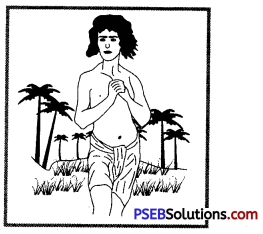
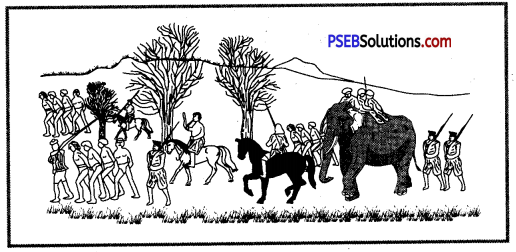
5. Second Revolt of Munda tribe. Munda tribe has been a very famous tribe of Bihar. During British rule, many non-tribal people settled in the tribal regions. They snatched land from the tribal people. That’s why tribal people were forced to do labour work for non-tribal people. When they got frustrated, then they revolted under the leadership of Birsa Munda. The main revolt was started in the southern region of Ranchi in 1899-1900. The main objective of this revolt was to replace the British rule with Munda rule.
Birsa Munda stood against those non-tribal people who took away the land from the Munda people. Munda people also hate the moneylenders and Zamindars because they used to treat them badly. Birsa Munda told the Munda people not to pay the rent to Zamindars. Munda people in the Chhota Nagpur region attacked the British officers, missionaries, and police stations. But Birsa Munda was arrested by the British and revolt was crushed by them.
